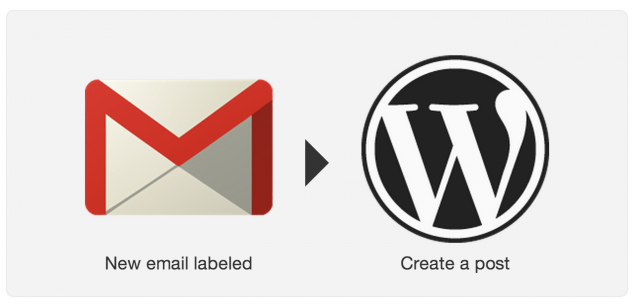{email + wordpress = ?}
While this recipe is probably mostly useless, I find the quirkiness of it to be rather endearing. Perhaps this recipe may not be completely ‘useless’ after all though – since it provides a means for me to personally document / organize my blog writings in an easily accessible area. At the same time, I still find it a little unsettling that IFTTT has to parse the content of my emails in order to create a blog post, despite how I have technically granted them access to do so. Regardless, the paranoid tinfoil hat-wearing girl in me cannot help but wonder: if a site like IFTTT has access to all these personal accounts and information, then wouldn’t that mean that its members are leaving themselves vulnerable to the potential compromise of sensitive information?
via Gmail
On APIs and Computer Art: Before reading Jer Thorp’s article I admit that I had very little knowledge on APIs and was hardly able to remember what it stood for. Now I understand that APIs are simply a means to transport data from one location to the next, to ‘bridge one piece of software to another’. The fact that this data can be outputted / conveyed in a number of different, meaningful forms demonstrates how APIs are conducive to many possibilities. Concerning computer art, it could be argued that APIs could be used as tools of art creation; with regard to Jim Campbell’s Formula for Computer Art, APIs similarly take a form of input, runs the input through processes, and produces some form of output that may be meaningful, useless, or something in between. Simply because an API is not conventionally viewed as a means to create artwork, does not mean that it cannot be used to do so at all. For instance, I consider Jer Thorp’s API that returns a list of people in his twitter feed, equivalent to the number of people killed in the most recent drone strike, to be a powerful piece of computer art that blends socio-political commentary with a hint of dark humor.





